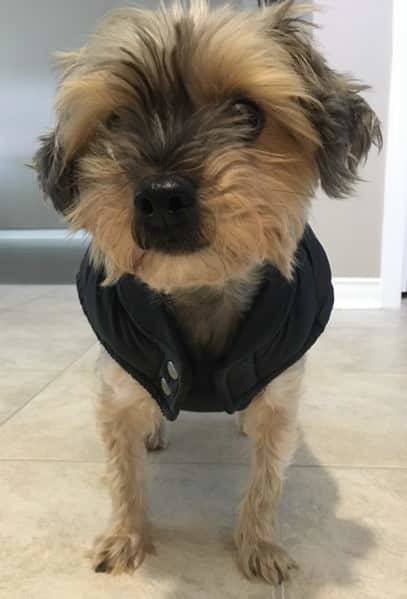Winter Coats For Dogs – Are They Necessary?
Some breeds naturally excel in the winter, while other breeds don't. Typically the thick-haired, larger breeds (Huskies, Saint Bernards, Alaskan Malamutes, etc.) handle winters as though they were made for cold climates. In contrast, the smaller breeds, or larger breeds with lesser hair, may be constrained to suffer.
For the less adaptive breeds, winter coats for dogs can play a crucial role in their winter safety. So yes, dog coats are necessary for the winter months, depending on your dog's breed and how thick their coat.
But how do you pick the perfect jacket when there are so many on the market? Easy, by following the below requirements:
Warmth
Let's start here. You know your dog and their needs best, so before picking a coat, determine how warm it will need to. Base this on the thickness of their fur and the length of time they generally spend outside.
For example, if you have a small breed dog with a thin/shaved coat, you'll want to find something fleecy, snug, and warm. If you have a medium/large breed dog with more hair, you may not need something as thick.
Here are some different varieties to choose from:
Size
If you're able to bring your dog into the pet store to pick out a jacket, that's probably your best bet. That way, you can gauge what size and style fits best by trying on different coats.
If you are making an online purchase, you'll want to have a measuring tape handy. Most online pet merchants will have a size guide that indicates how their items will fit. They will require you to measure your pet's back length (from the base of their neck to the top of their tail) and their chest girth (the circumference of the largest part of their chest, behind their forelegs). Once you have these measurements, you will be able to match them to the sizing chart.
Some size charts will be based on LBS and indicate an "up to" weight; these styles may be trickier to fit.
Material
Snow and rain are harshest in the winter months, so you'll want to go with a waterproof exterior. Generally, a soft fleece inner lining or faux-filled insulation will keep your dog warmest. Cotton blends are another popular choice.
You know your dog and their needs best, so before picking a coat, determine how warm it will need to be based on the thickness of their fur and the length of time they generally spend outside.
Weight
Be sure to pick out a relatively lightweight jacket. You don't want a coat that will weigh your dog down and add more pressure to their body/joints. From what I've seen on the market, most coats tend to have a similar heaviness, so be mindful of this factor when you are picking one out.
Comfort
When picking out a coat, ensure that it doesn't fit too tight. If you pack your dog into the jacket like a sardine in a tin can, their circulation may get cut off. Run your fingers along the neck of the coat, around their legs, and the lining that covers their stomach. If you can't comfortably fit your fingers in the gaps, then it's too tight. You may also notice tightness by the way your dog walks. Snug is okay, tight is not.
Quality
When your dog is fully grown, investing in a good jacket that will last many winters is your best bet, price aside. If you've done some research on different jackets, you've noticed the price ranges. Some may cost you $10, while others will be $60+. I spent $55 on Rocky's winter coat, and it's been worth every penny. The material is top quality, and after two years, it looks just as it did the day I bought it. In the past, I have purchased inexpensive jackets that eventually fell apart. So, in my opinion, it's better to buy something tried and true and to spare no expense if you're able to. Just like humans, dogs can suffer from hypothermia and frostbite, so spending a few extra dollars on a quality product that will keep them safe and protected in the winter is worth it, it will also save you money in the long run.
Style
Some jacket styles include covered legs, while others are more of a vest style, where the focus is on keeping their midsection protected. Some dogs feel restricted when their legs are covered, so pick whichever style works best for your dog. If possible, watch them walk around in the jacket, you will immediately know which style they feel more comfortable in. When rocky has his legs even slightly covered, he walks sideways. Although adorable to watch, definitely uncomfortable for him to wear.
How Should A Dog Coat Fit?
The coat should be a snug fit that allows your dog to move around with ease. It shouldn't be tight or restrictive along their neck, stomach, or legs. It should span from the base of their neck down to (or covering) their tail for optimal warmth and coverage.
I purchased a Canada Pooch Summit Stretch Vest for Rocky last winter, and it's not only the cutest on him but also one of the best purchases I've made. He won't go outside without it once winter temperatures hit.
For this jacket, I went into my local PetValu and had him try on multiple sizes until I found the perfect fit. However, their website has a great size guide that I found very accurate to fit.
Here are a few pictures that show how a coat should fit your dog:



Be sure to check out our other helpful seasonal articles: Walking Your Dog In The Winter, 8 Important Winter Safety Tips For Dogs, Canada Pooch Summit Vest Review, and Dog Boots: Everything You Need To Know.
Subscribe to our mailing list so you never miss a post!
